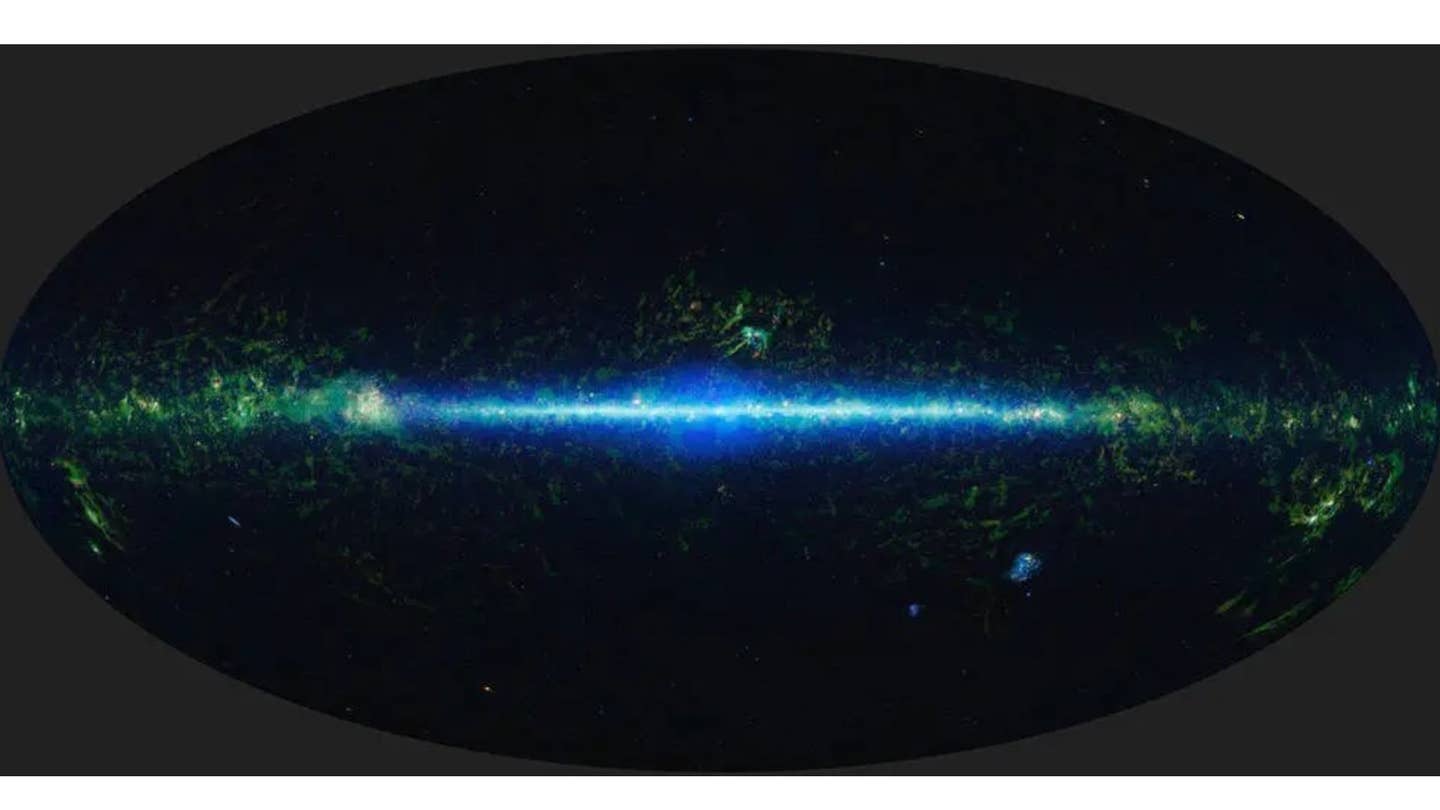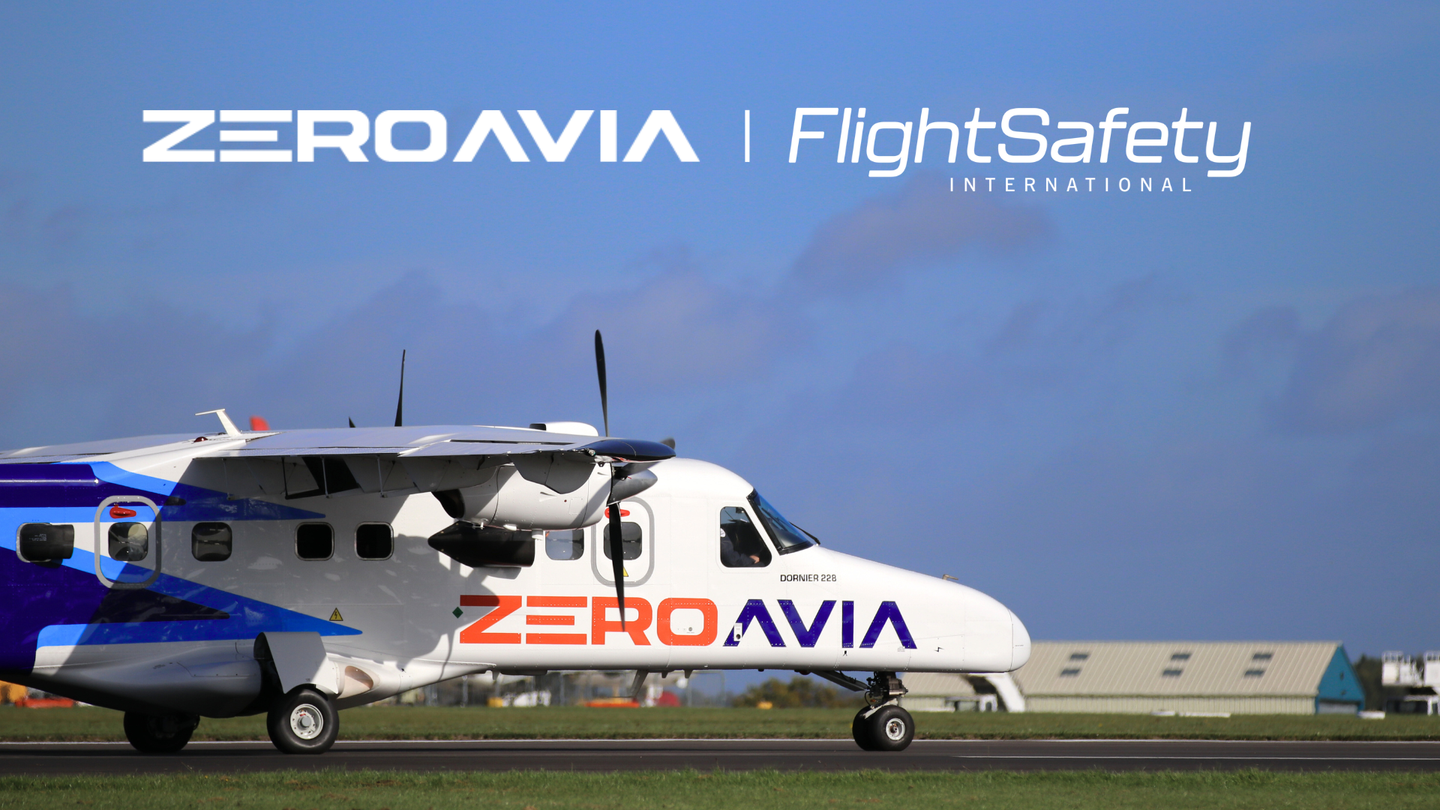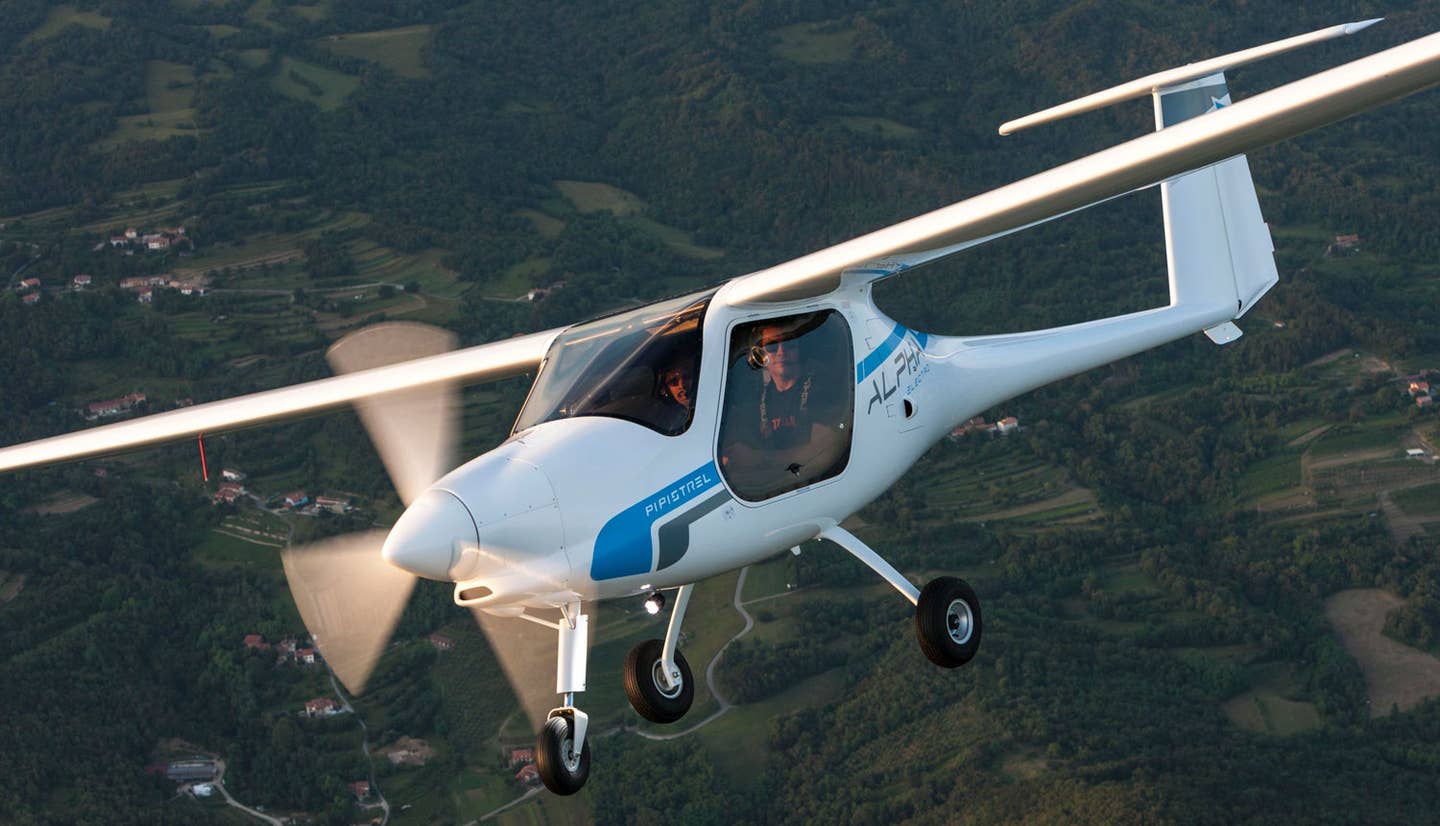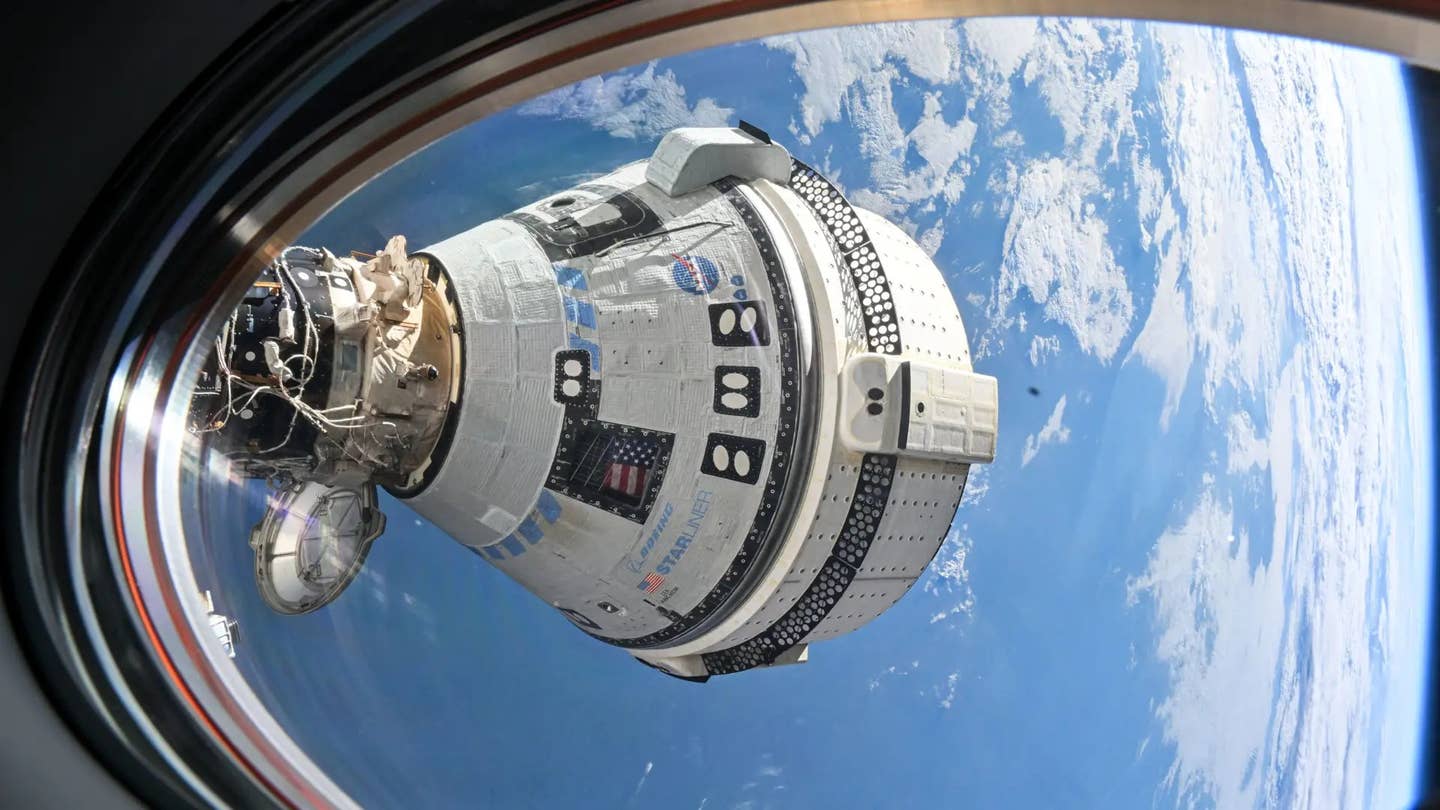NASA’s Asteroid, Comet Hunting Telescope Set to Retire at End of Month
NEOWISE has taken millions of infrared measurements and studied tens of thousands of asteroids, comets, stars, galaxies, and other objects.

Using infrared instruments, NEOWISE, formerly known simply as WISE, is used to create 360-degree images of the visible universe. [Courtesy: NASA Jet Propulsion Laboratory]
A NASA space telescope designed to “hunt” asteroids and comets that could pose a threat to life on Earth and orbiting spacecraft will soon burn up in orbit.
In late 2024 or early 2025, the agency’s Near-Earth Object (NEO) Wide-field Infrared Survey Explorer—or NEOWISE—is expected to come home in pieces following the conclusion of its second mission later this month. The spacecraft, which spent more than a decade collecting data on objects whizzing past the Earth and exploring ways to defend the planet and its satellites from falling rocks and ice, is now at the mercy of the sun. Soon, it will become unusable.
However, NASA has a replacement lined up: the Near Earth Object Surveyor (NEO Surveyor), set for a 2027 launch. The infrared space telescope is the first to be designed specifically for hunting large numbers of NEOs in and around Earth orbit. It has a baseline development cost of $1.2 billion to which NASA committed in 2022.
“NEOWISE has become key in helping us develop and operate NASA’s next-generation infrared space telescope,” said Amy Mainzer, principal investigator of NEOWISE and NEO Surveyor at the University of California at Los Angeles. “It is a precursor mission. NEO Surveyor will seek out the most difficult-to-find asteroids and comets that could cause significant damage to Earth if we don’t find them first.”
On the Hunt
Built by Ball Aerospace & Technologies Corp. and borne out of NASA’s Jet Propulsion Laboratory (JPL), NEOWISE has actually contributed to two separate missions in its 14 years of operation.
Originally known simply as WISE (Wide-field Infrared Survey Explorer), the telescope launched in December 2009 and now orbits the Earth 15 times each day. It was placed in hibernation in 2011 after two years spent discovering and studying galaxies, comets, asteroids, white dwarf stars, and faint objects undetectable to ground-based telescopes.
WISE mapped the entire visible sky using infrared wavelengths—twice—to visualize the clouds of gas and dust orbiting around stars, and its findings are still being analyzed. It also identified tens of millions of supermassive black holes feasting on stars, hiding in plain sight.
After being reactivated in 2013, the spacecraft, now bearing the name NEOWISE, embarked on its second mission, which NASA says has become a key piece of its current planetary defense strategy.
In 2005, Congress directed the space agency to identify and describe at least 9 in 10 of the large space objects that come within 30 million miles of Earth’s orbit. The objective is to seek out hazards and steer them clear of the planet and its growing commercial spaceflight industry.
From near-Earth orbit, NEOWISE so far has taken 1.45 million infrared measurements of 44,000 objects in the solar system. Of those, 3,000 are near-Earth objects (NEOs), including 215 newly discovered NEOs. One of these, named Comet NEOWISE in the spacecraft’s honor, could be seen lighting up the night sky during summer 2020.
“The spacecraft has surpassed all expectations and provided vast amounts of data that the science community will use for decades to come,” said Joseph Hunt, NEOWISE project manager at NASA JPL. “Scientists and engineers who worked on WISE and through NEOWISE also have built a knowledge base that will help inform future infrared survey missions.”
However, because it lacks a propulsion system to keep itself in orbit, the spacecraft has gradually descended toward Earth since launching.
Compounding that is the solar maximum: a period of increased solar activity that occurs every 11 years and appears to be on the horizon, so to speak. Solar flares and other activity are expected to cause atmospheric drag on satellites, which could cause NEOWISE to come tumbling back to Earth as soon as this year.
“The mission has planned for this day a long time,” said Joseph Masiero, deputy principal investigator for the program. “After several years of calm, the sun is waking back up. We are at the mercy of solar activity, and with no means to keep us in orbit, NEOWISE is now slowly spiraling back to Earth.”
As NASA announced in December, the mission will officially come to an end on July 31 when the telescope ceases surveying. The space agency will then place it in hibernation for the final time in August.
Introducing NEO Surveyor
However, NEOWISE’s legacy is expected to live on through NEO Surveyor.
Unlike its predecessor, which found new life under a revised mission profile, NEO Surveyor is being purpose-built to hunt large numbers of asteroids, comets, and other NEOs. Construction of the new design began in December 2022 following a successful technical review, and NASA aims to have it ready in time for a 2027 launch.
Orbiting between the Earth and sun, NEO Surveyor’s mission will be to search for the darkest, least reflective NEOs using its infrared sensors. It will focus mainly on large objects in the neighborhood of Earth’s orbit, which are thought to pose the greatest threat to life should they make impact on the planet or spacecraft. It will also uncover “Earth trojans”—asteroids already in orbit that are often hidden by the sun’s glare.
The program will not eliminate or deflect NEOs, but, as NASA puts it, the agency can only protect Earth and its satellites from hazards if it can identify them first.
“Ground-based telescopes remain essential for us to continually watch the skies, but a space-based infrared observatory is the ultimate high ground that will enable NASA’s planetary defense strategy,” said Lindley Johnson, planetary defense officer at NASA’s Planetary Defense Coordination Office in Washington, D.C.
After launch, NEO Surveyor will use its infrared instruments to complete a five-year baseline survey. Its goal is to find at least two-thirds of the NEOs larger than 460 feet across and describe their composition, shape, orbital behavior, and rotation. The observations are intended to be accurate enough that NASA could easily rediscover each object.
Planetary defense is the program’s highest goal. But NEO Surveyor will further help NASA scientists understand how comets and asteroids form and evolve, also an objective of the space agency’s concurrent Psyche asteroid mission.
Like this story? We think you'll also like the Future of FLYING newsletter sent every Thursday afternoon. Sign up now.

Sign-up for newsletters & special offers!
Get the latest FLYING stories & special offers delivered directly to your inbox






